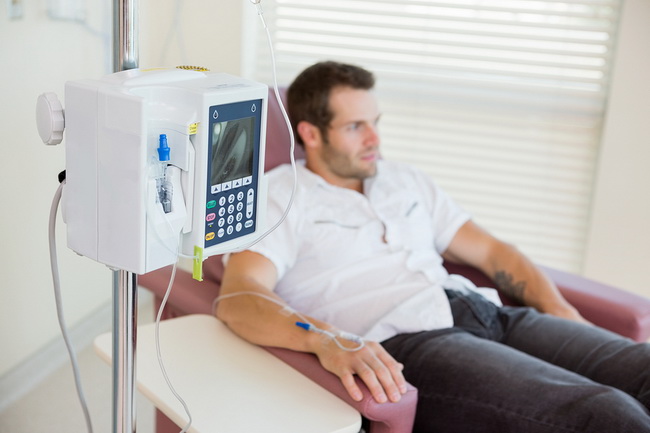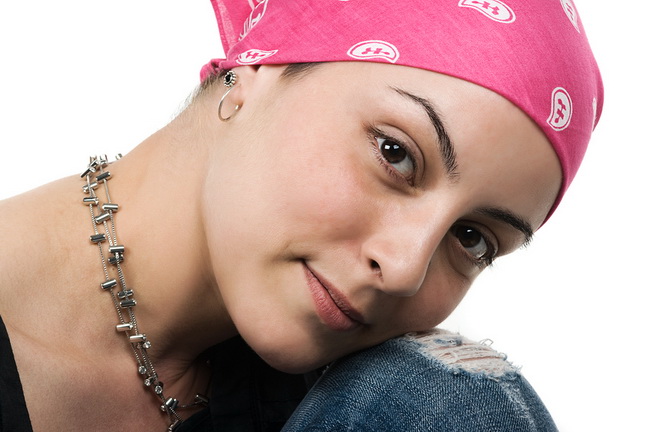- Make It Yourself Lavender Heart-Shaped Bath Bombs!
- 20 Things You Never Knew About “Down There”
- 12 Best Foods For Those Suffering From Arthritis Pain
- 12 Personal Hygiene Mistakes Almost Everyone Makes (Mom Never Told You About #4!)
- 15 Medicinal Plants And Herbs From The Cherokee People
- 12 Mind-Blowing Benefits Of Drinking Coconut Water During Pregnancy
- 12 Outstanding Winter Foods That Won’t Fatten You Up Like A Christmas Turkey
The Truth about Chemotherapy and Radiation Therapy for Cancer

Photo credit: bigstock.com
You hear doctors talk constantly about how chemotherapy saves lives, doesn’t damage healthy cells, and improves long term survival rates. As you would imagine, these statements all come from the companies that sell these drugs, so it’s equally no hard to imagine that these statements are also false. Why is it that, with all the billions of dollars that are being poured into cancer research, the cancer industry’s only answer is still cut, poison, and burn?
That’s because cancer is a billion dollar industry.
Chemotherapy not only does cause damage to healthy cells, but it encourages them to make a protein that allows tumors to grow and become resistant to any further treatment. In fact, chemotherapy actually encourages cancers to grow. Our traditional method of treating cancer is the leading cause of secondary cancers.
The cancer industry is particularly repugnant because the very products that cause many cancers are made by divisions of the same corporations who make the equipment that are used to diagnose cancers, the drugs used in chemotherapy, as well as the ones that are intended to keep the cancer from returning.
The cancer industry destroys any safe or effective cures so they can promote their expensive, toxic remedies that actually do more harm than good. There has been no cancer drug that has ever actually cured anyone. Even what most doctors would consider successful cancer treatments are really only managing the symptoms. In fact, since there is no such thing as a drug without a side effect, people have truthfully only changed one problem (the cancer) for another (the side effects from chemo.)
The one thing that doctors won’t tell you is that traditional chemo and radiation might kill cancer cells, yes, but it also kills you.
Continue to Page 2

Photo credit: bigstock.com
Almost all chemo drugs enter your brain and directly, or indirectly, and produce numerous changes to your central nervous system. If you have ever known someone who has undergone chemotherapy and they talk about having “chemo-brain,” they are referring to the changes chemo makes to their thought process. These effects can last for years.
Chemo drugs are known for causing other cancers, with leukemia being one of them. The risk of developing secondary cancers after exposure to these drugs develops slowly over time. Studies show that the risk begins to rise dramatically about 2 years after treatment has ended and reaches its highest point somewhere between 5 to 10 years after treatment. This is why most cancer patients die within 10 to 15 years after treatment.
Radiation also increases the risk of developing secondary cancers in most people who undergo this type of therapy. There are numerous types of cancer linked to the use of radiation, with the most common ones being sarcomas and leukemia. Again, these cases develop within a few years after radiation. Some doctors try to hide the facts by saying that the secondary cancer was the result of a spread of the original cancer, but studies show that radiation induced cancers have exploded in the past few decades since radiation has become a common treatment.
NCEPOD (The National Confidential Enquiry into Patient Outcome and Death) discovered that more than 4 out of every 10 cancer patients who received chemotherapy towards the end of their lives suffered fatal side effects from the drugs. Globally, about 90 percent of patients who are given chemotherapy die in less than 15 years after their treatment ends. They generally die from a compromised immune system, or secondary cancers. Cancer treatment or the diagnostics involved are never, ever mentioned as a cause of any secondary cancers.
These statistics make it obvious that the typical cancer industry supplied drugs are not only failing to kill cancer, but are failing to improve the quality or the length of life of cancer patients, the time has come to consider alternative methods to expensive, patented chemicals and ionizing radiation for both the prevention and treatment of cancer.
What doesn’t kill cancer makes it stronger.
Dr. Mark Dewhirst, professor of radiation oncology at Duke University was the first to admit that, although chemo and radiation kills some cancer cells, it only makes the cancer cells that survive treatment grow stronger. In fact, the cancer cells that survive are more aggressive than they were before treatment, almost as if they know what’s going on and are determined to survive. Cancer cells that survive figure that where they are located is a dangerous place, so they invade a blood vessel and go someplace else in the body to live. This is why cancers come back stronger and grow faster in another place inside the body after chemotherapy has ended.
Continue to Page 3

Photo credit: bigstock.com
Some solutions might be as close as your kitchen.
SEE ALSO: This Beautiful Scent More Effective than Chemo?
Consider Turmeric
Currently, US law forbids the medicinal use of natural substances, but turmeric has been used for medicinal purposes for thousands of years. In fact, the main compound in turmeric, called curcumin, is perhaps one of the most extensively studied compounds ever. With more than 4,500 references to studies done on curcumin in the National Library of Medicines database, there is no doubt that this substance has been well documented. What has it shown? Curcumin has been shown to be effective in more than 500 diseases in studies involving animals. It has yet to be tested in human clinical trials, but it holds great promise as being able to prevent or cure many different types of cancer. Why doesn’t the cancer industry apply some of that research money to turmeric? Because there is no money in it. If it should be discovered that turmeric can prevent or stop many cancers, they would lose billions of dollars in sales of their chemotherapy drugs.
Look into all your options before you consider undergoing chemotherapy and radiation treatment. Knowledge is your best defense.
Sources:
Dewhirst, Nature Reviews Cancer, June 2008; vol 8: pp 425-438.
Semenza, G.L. Drug Discovery Today, October 2007; vol 12: pp 853-859.
Semenza, G.L. IUBMB Life, 2008; preprint received from author.
Melillo, G. Methods in Enzymology, 2007; vol 435: pp 385-402.
Melillo, G. Molecular Cancer Research, September 2006; vol 4: pp 601-605.
































